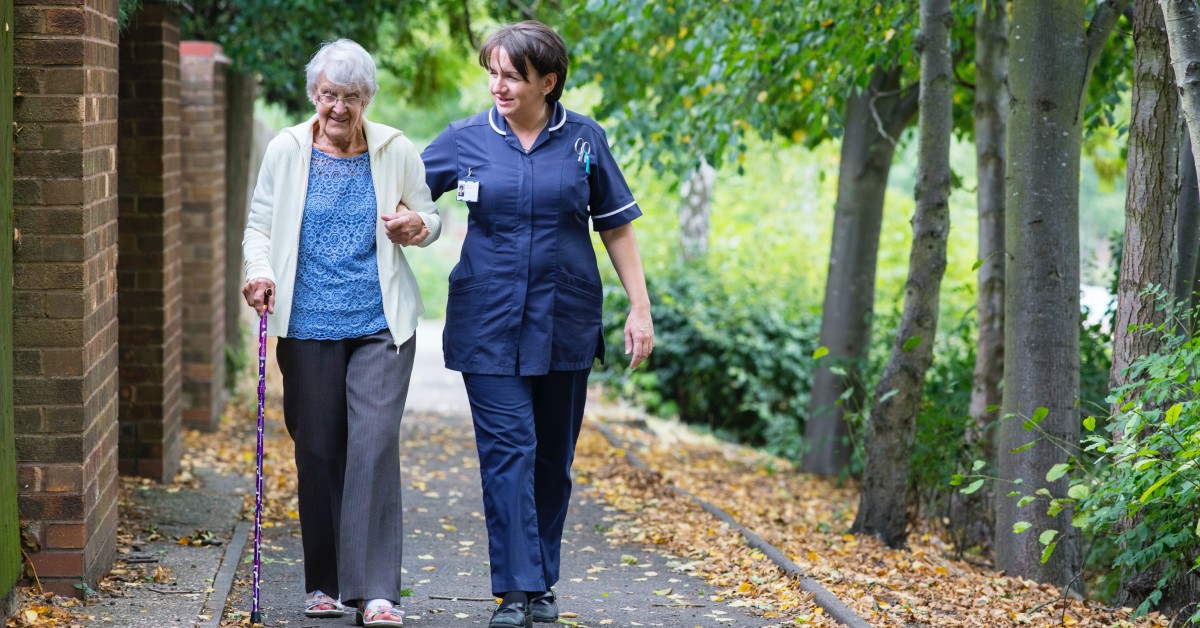
Telehealth Jobs for Psychiatric Mental Health Nurse Practitioners
The benefits of telehealth go beyond the comforts of home; [...]

According to Money and US News & World Report, physical therapist ranks among the nation’s ten best healthcare jobs. CNBC goes even further, declaring physical therapist one of the 20 best jobs across all industries and functions. A job that pays well and demonstrably helps people overcome pain and disability: what’s not to love?
To become on of these healthcare heroes, you’ll need a Doctorate in Physical Therapy (DPT) from a program accredited by the Commission on Accreditation in Physical Therapy Education (CAPTE). There are 256 accredited PT degree programs in the United States. Of these, 18 are in Pennsylvania.
Each of the PT programs in Pennsylvania has its own strengths. Six of them can be found among the top 100 programs in U.S. News & World Report’s list of the best physical therapy programs. The Keystone State’s PT schools are unquestionably worth checking out.
In this article about Doctor of Physical Therapy programs in Pennsylvania, we cover:
To be eligible for licensure in Pennsylvania and elsewhere in the US, physical therapists must complete both a bachelor’s degree program (usually in exercise physiology, health sciences, or a related field) and a DPT program. Completing an undergraduate degree usually takes four years, while earning a physical therapy doctorate takes three, making the typical academic commitment required to become a PT roughly seven years.
Some physical therapy schools in PA offer what’s known as “freshman entry” DPT programs. These recruit students directly from high school and follow a 3+3 curricular format: three years of accelerated pre-PT undergraduate work, followed by guaranteed admission into a three-year DPT program. Students in those programs earn the academic credentials necessary to take the National Physical Therapy Examination (NPTE) and apply for a PT license in Pennsylvania in just six years.
It wasn’t that long ago that the entry-level PT degree was a bachelor’s. Then the American Physical Therapy Association mandated that the minimum education required to become a physical therapist would be the Master of Physical Therapy (MPT) or Master of Science in Physical Therapy (MSPT). Finally, MPT and MSPT programs were phased out and replaced by DPT programs.
Doctorate in Physical Therapy programs come in two varieties: entry-level programs and post-professional programs. The former are designed for students who don’t hold graduate degrees in PT and have not worked as physical therapists. The admission requirements for these programs typically don’t ask that applicants come from a medical background. However, they may require them to take specified foundational courses and shadow a working PT before applying. Post-professional (or transitional) DPT programs are for licensed physical therapists with bachelor’s degrees or MPTs who want to achieve degree parity with younger peers or bring their skills and knowledge up-to-date.
Approximately 80 percent of the typical DPT curriculum is didactic, meaning it occurs in a classroom setting. At University of Pittsburgh, which is ranked first in the nation by U.S. News & World Report and is home to the top Doctor of Physical Therapy program in Pennsylvania, physical therapy students take classes like:
The other 20 percent is dedicated to clinical experiences in a variety of settings. The average DPT student will spend about 30 hours completing supervised clinical work. Some programs build 40 or more hours into the DPT curriculum.
The three-year DPT at Alvernia University can be completed on its own or as part of a 4+3 or accelerated 3+3 freshman-entry program with four majors: biochemistry, biology, healthcare science, and psychology. The curriculum is built around the practical application of knowledge; clinical immersion begins in the first semester. The physical therapy program is housed in a new state-of-the-art facility that includes a research lab for motion analysis and labs with four virtual dissection tables. PT students interact with students from the OT, nursing, behavioral health, athletic training, medical imaging, and healthcare science programs. The program incorporates service-learning initiatives.
Arcadia University developed the first PT degree program in Pennsylvania to offer both entry-level and transitional Doctor of Physical Therapy degrees. The school also provides a pre-PT program at the bachelor’s degree level. Internationally known faculty, high-tech physical therapy facilities, and clinical experiences situated at top-rated medical facilities help Arcadia stand out. Lectures have largely been replaced with small group discussions, seminars, problem-solving strategies, and guided-self discovery laboratories. The curriculum incorporates opportunities to participate in international research and community service; some students opt into eight-week clinical experiences in London or six-week clinical experiences in Jamaica, Peru, or Guatemala.
Chatham University’s full-time, cohort-based 107-credit entry-level DPT program can be completed in just 28 months. It emphasizes clinical decision-making; much of the curriculum is presented in a problem-based learning format. Students complete their clinical residencies throughout the United States in acute care, outpatient, skilled nursing facility, pediatric, sub-acute, home health, and rehabilitation settings. The physical therapy doctorate program boasts a 99 percent pass rate and a 100 percent employment rate.
The Department of Physical Therapy and Rehabilitation Sciences’ 128-credit PT program is taught by PT leaders and specialists in orthopedic PT, neurological PT, hand PT, pediatric PT, and geriatric PT. Students learn in integrative clinical and research facilities. They collaborate with peers from other healthcare disciplines, use state-of-the-art medical technology like simulation mannequins, and benefit from the department’s dedicated research laboratory space. In addition to fieldwork in the program’s clinical partners’ offices, DPT students hone their skills in the school’s clinical practices.
Housed in the John G. Rangos, Sr. School of Health Sciences, the Doctor of Physical Therapy program at Duquesne University offers a graduate admission option and a freshman admission with a biology track and a health science track. There is also an Athletic Training/Doctor of Physical Therapy joint program. Faculty engage in research, publish in highly regarded journals, and serve on scholarly review panels. This program emphasizes clinical experiences, requiring students to complete 40 hours of supervised fieldwork. Three experiences focus on different patient populations—outpatients, inpatients, and patients who require extended rehabilitation. Students can choose clinical settings related to their areas of interest and career goals for the final two.
The Morosky College of Health Professions and Sciences has a 33-month entry-level Doctor of Physical Therapy degree. In this program, clinical placements are guided by student learning goals. Students complete clinical experiences at sites throughout the United States and Canada. Full-time faculty members come from specialty areas like wound care, cardiopulmonary PT, lymphedema, hand therapy, pediatric PT, neurological PT, and orthopedic PT. They are actively engaged in research and other scholarly activities.
LVC’s Doctor of Physical Therapy (DPT) program includes a post-professional admission pathway, a traditional graduate admission pathway, and a guaranteed freshman admission pathway. Students take classes and practice their clinical skills in the school’s new state-of-the-art Jeanne and Edward H. Arnold Health Professions Pavilion, which houses a cadaver anatomy lab and a human performance lab. Faculty members with real-world experience in pediatrics, geriatrics, orthopedics, sports medicine, neurology, acute care, and home health mentor students. The curriculum incorporates clinical work in the student-led CURE Clinic, which serves uninsured patients free of charge.
Misericordia’s primary physical therapy program is a six-and-a-half-year combined bachelor’s degree and doctoral degree program; the school also offers an entry-level post-baccalaureate program. Students complete four 10-week clinical education experiences with additional opportunities to treat the uninsured and underinsured under a licensed physical therapist’s supervision. This DPT program has a 100 percent graduate employment rate.
Neumann University stands out for its three-year weekend DPT designed to allow working professionals from other fields to transition into physical therapy while still earning income. Students have a wealth of choices regarding completing the required 30 weeks of full-time clinical education experiences because the program has partnerships with more than 495 clinical experience sites across the US. The full-time faculty is relatively small, supplemented by more than 30 associate faculty members who participate in the program as guest lecturers, specialty course instructors, and lab assistants.
The School of Health Sciences at Saint Francis University offers a graduate admission DPT, a freshman admission DPT, and a dual DPT/MBA. The entire program takes place on campus except for select educational experiences at local healthcare facilities. Campus facilities include a human performance laboratory, a multidisciplinary clinic, and a rural health and wellness research center.
Slippery Rock offers a traditional entry-level DPT and a 3+3 pre-PT/DPT. Students rotate through four different clinical experiences in various settings and explore PT specialties through the school’s Professional Exploration coursework. These classes provide students with additional exposure to the clinical specialty areas that interest them most. The Graduate School of Physical Therapy at SRU was the third in the US to transition from a master’s degree program to a doctoral degree program.
Temple University’s full-time, year-round program takes three years to complete and can be paired with a bachelor’s degree as part of a 3+3 accelerated pathway. The program’s cohort model lets students form lasting relationships and build a robust professional network. A new building, equipped with smart classrooms and specialized clinical training spaces where students can participate in simulated clinical experiences, houses the program. Students can also participate in faculty research as analysts, assistants, and observers. The program includes a service component: students gain experience working in the student-led, pro bono physical therapy center and on service-learning trips.
Students in this program can choose the freshman-entry 3+3 format or three-year graduate-entry format. Both occur on campus and require students to commit to a full-time schedule. Professional outreach is a big part of the Thomas Jefferson University DPT. All physical therapy students are encouraged to join the American Physical Therapy Association and the Pennsylvania Physical Therapy Association. Students also attend professional events like the PPTA Annual Conference and contribute as members of the Physical Therapy Society.
UPitt is home to one of the oldest and most highly regarded PT degree programs in the nation. It has state-of-the-art academic spaces, a rigorous clinical program, and three physical therapy degree options: a 111-credit DPT, a dual DPT/PhD in Bioengineering, and a post-professional MS in Physical Therapy for active practitioners who want to update their knowledge and skills. The clinical opportunities available to students are a big part of why this program is ranked number one. Students can complete fieldwork in settings as diverse as tertiary acute care medical centers, independent living facilities, and inpatient psychiatric and mental health facilities.
The Department of Physical Therapy at the University of Scranton offers a three-year DPT overseen by faculty from a broad range of specialties. Students learn from physical therapy professors clinically certified in geriatrics, sports medicine, anatomy, cardiopulmonary PT, women’s health PT, fall prevention, and pediatric PT. This program emphasizes service and compassion. Students undergo substantial hands-on training through internships and domestic and international service trips and volunteering sessions. Professional development is built into the program; 100 percent of DPT candidates at the University of Scranton are members of the American Physical Therapy Association.
Classes in the DPT program at this school are taught by doctorate-holding, clinically certified PT specialists. Students begin working with real patients in year one at the University of the Sciences pro-bono clinic and complete their full-time clinical fieldwork in locations around the US. The immersive and evidence-based curriculum provides research opportunities through which students can participate alongside faculty in the Physical Therapy Department’s Motion Analysis Laboratory and in the BTE Technologies Rehabilitation Research Laboratory.
The Institute for Physical Therapy Education at Widener University is home to a pre-PT program and a full-time, 120-credit doctorate program that takes three years to complete. Students in the program hone their hands-on skills at the Chester Pro-Bono Clinic (an interprofessional student-run facility) starting in semester one. The curriculum includes three full-time clinical education experiences under the supervision of a licensed physical therapist. The program boasts a 100 percent NPTE pass rate and a 100 percent employment rate.
Enrolling in any physical therapy degree program involves a large financial commitment. It wasn’t always as expensive to become a physical therapist. As the educational commitment required to become a PT jumped from the bachelor’s to the master’s to the doctorate, so did the cost. Today, the average entry-level physical therapy degree costs about $66,000 at public colleges and universities and $113,000 at private institutions, according to data collected by CAPTE.
Many of the Doctor of Physical Therapy programs in Pennsylvania cost more. If you take out loans to pay for a PT degree, choose your program carefully. One study found that a physical therapy degree represents a good investment, but only up until a reasonable debt threshold.
A DPT isn’t all it takes to become a PT in PA. Like all physical therapists, PTs in Pennsylvania have to take and pass the NPTE to be eligible for licensure. The State Board of Physical Therapy is the governing body that regulates the physical therapy practice in PA and grants licenses.
Pennsylvania actually places fewer hurdles to licensure than other states. Physical therapists must earn a degree, pass the NPTE, and carry professional liability insurance. They do not need to submit transcripts, pass a criminal background check, or pass a state-mandated jurisprudence exam as proof they’re aware of state laws and rules related to PT. That, plus the abundance of DPT programs, makes the state an excellent destination for aspiring physical therapists to learn and work.
(Updated on April 25, 2024)
Questions or feedback? Email editor@noodle.com

The benefits of telehealth go beyond the comforts of home; [...]

The states with the highest average salaries for psychiatric mental [...]

Physical therapists are in high demand and the field is [...]

What skills and knowledge will you gain when you acquire [...]

It's difficult to keep track of everything you can do [...]
Categorized as: Physical Therapy, Nursing & Healthcare